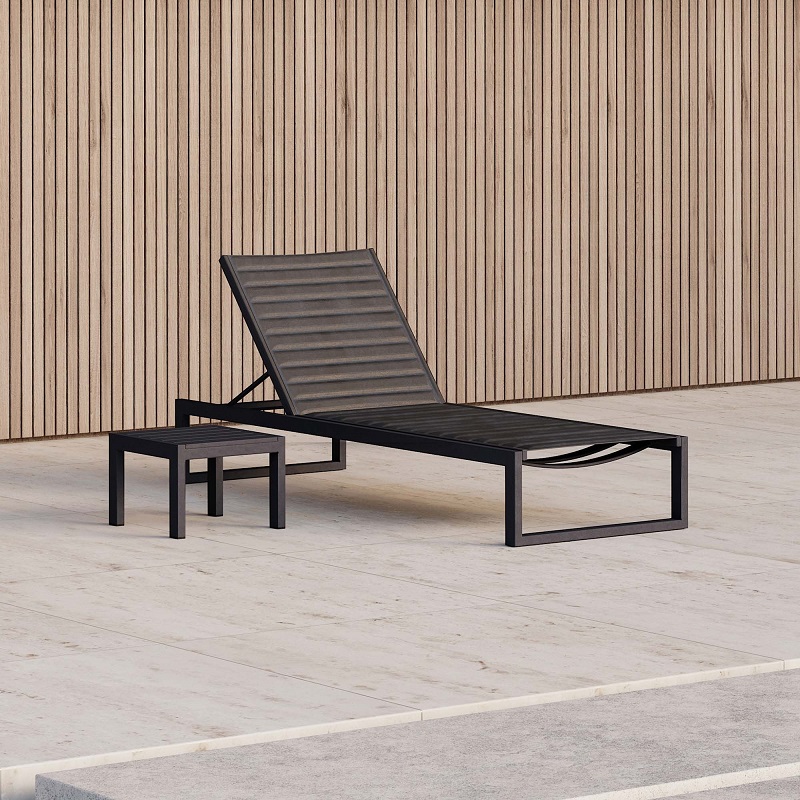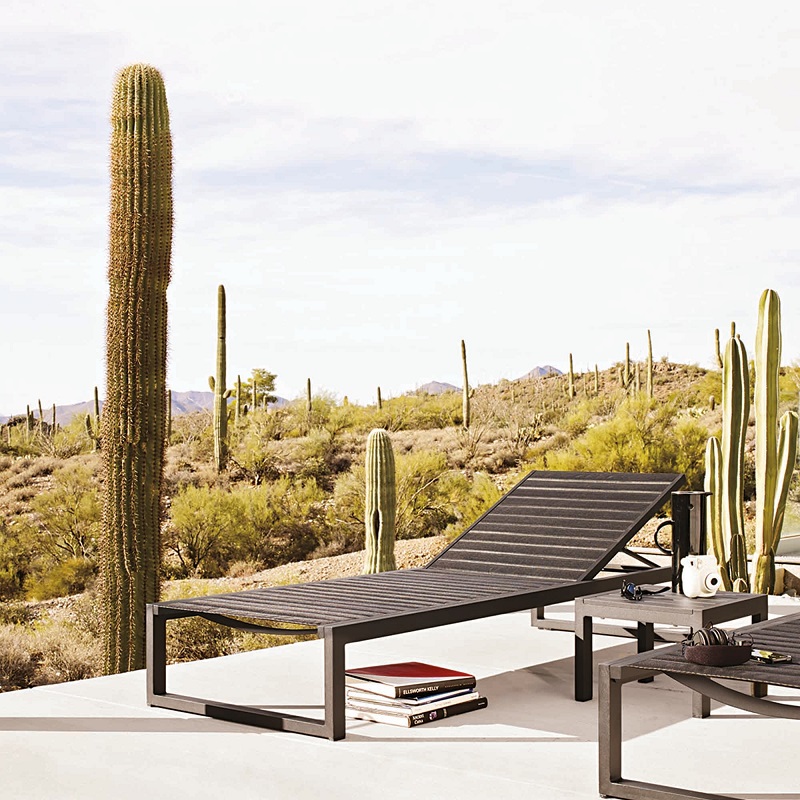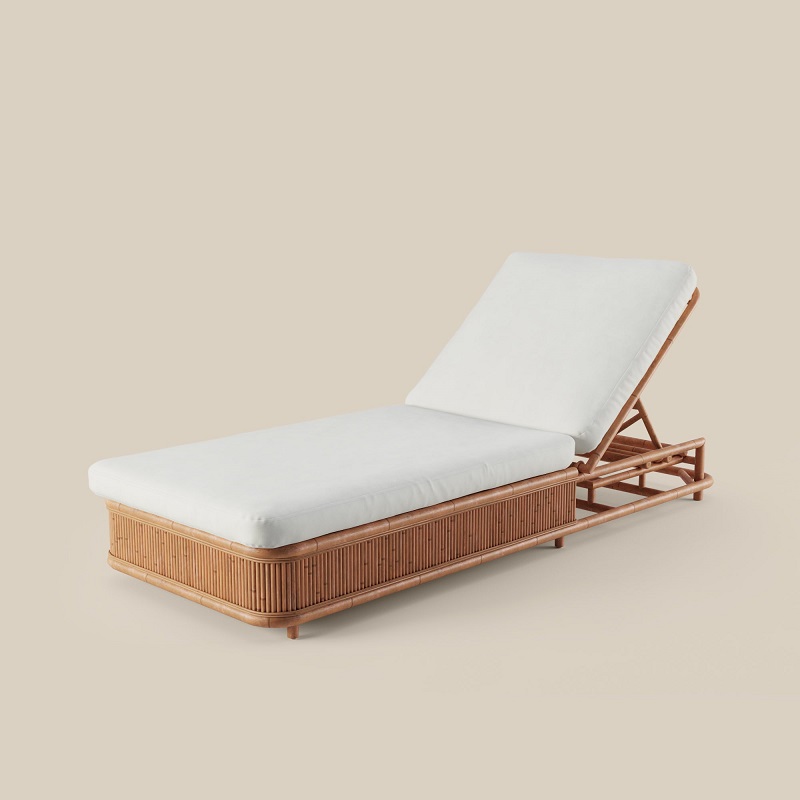When it comes to transforming your outdoor space into a haven of relaxation and comfort, sun lounger chairs are a must-have. These versatile pieces of furniture not only enhance the aesthetics of your garden, patio, or pool area but also provide an ideal spot for unwinding and enjoying the outdoors. In this comprehensive guide, we will explore various aspects of sun lounger chairs, from choosing the right design to maintaining them for long-lasting enjoyment.
Understanding Sun Lounger Chairs
The Definition and Purpose
Sun lounger chairs, also known as deck chairs or reclining loungers, are designed for lounging and sunbathing. Unlike regular chairs, they are typically reclinable and may feature adjustable positions to cater to different relaxation preferences. These chairs are usually constructed from weather-resistant materials, making them suitable for outdoor use.
The primary purpose of a sun lounger is to offer a comfortable seating option for sunbathing or resting. They often come with padding or cushioning for added comfort, and some models include features like built-in storage or cup holders. By integrating sun loungers into your outdoor space, you create a designated area for leisure activities, which can greatly enhance your overall outdoor experience.

Types of Sun Lounger Chairs
There are several types of sun lounger chairs, each catering to different preferences and needs. The most common types include:
- Classic Wooden Loungers: These are traditional loungers made from wood such as teak or eucalyptus. They are known for their durability and timeless appearance.
- Metal Loungers: Made from materials like aluminum or steel, metal loungers are sturdy and often feature sleek, modern designs.
- Plastic or Resin Loungers: These are lightweight and resistant to weather conditions. They are easy to maintain and often come in a variety of colors and styles.
- Fabric Loungers: These loungers use fabrics like mesh or canvas stretched over a frame. They are known for their comfort and breathability.
Understanding these types can help you choose a sun lounger that best fits your outdoor space and personal style.
Choosing the Right Sun Lounger Chair
Consider Your Outdoor Space
When selecting a sun lounger chair, it’s essential to consider the size and layout of your outdoor space. Measure the area where you plan to place the lounger to ensure it will fit comfortably. If you have a smaller patio or balcony, opt for compact or stackable loungers that save space. For larger areas, you might consider multiple loungers or a more elaborate setup with side tables and umbrellas.
Material and Durability
The material of your sun lounger chair is crucial for its longevity and comfort. Each material offers distinct advantages:
- Wood: Offers a classic look and can be very durable if properly maintained. Teak, in particular, is known for its resistance to water and insects.
- Metal: Aluminum loungers are lightweight and resistant to rust, making them ideal for various weather conditions. Steel loungers are heavier and more robust but may require more maintenance.
- Plastic/Resin: These are often weather-resistant and low-maintenance. They come in various designs and are generally more affordable.
- Fabric: Look for high-quality, UV-resistant fabrics to ensure longevity. Fabrics should be easy to clean and resistant to mold and mildew.
Choosing the right material will not only affect the durability of the chair but also its overall comfort and maintenance requirements.
Design and Features
Sun loungers come with various design features to enhance comfort and convenience. Some features to consider include:
- Adjustable Backrests: Allows you to set the chair to the most comfortable position for lounging or sitting upright.
- Built-in Cushions: Provides additional comfort and support. Ensure that cushions are removable and washable for easy maintenance.
- Foldability or Stackability: Facilitates easy storage when not in use, especially important if space is limited.
- Armrests and Cup Holders: Adds to the convenience by providing a place to rest your arms or hold beverages.
Evaluating these features based on your preferences and how you intend to use the lounger will help you find the perfect chair for your outdoor relaxation needs.

Maintaining Your Sun Lounger Chairs
Regular Cleaning and Care
To keep your sun lounger chairs in top condition, regular cleaning is essential. Different materials require different cleaning methods:
- Wood: Clean with a mild soap solution and a soft brush. Avoid using harsh chemicals that can damage the finish. Regularly apply wood oil to maintain the wood’s natural sheen.
- Metal: Wipe down with a damp cloth to remove dust and dirt. For tougher stains, use a mild detergent. Check for signs of rust and address them promptly with a rust remover and touch-up paint if necessary.
- Plastic/Resin: These materials are generally easy to clean with a simple soap and water solution. For stubborn stains, a mixture of baking soda and water can be effective.
- Fabric: Depending on the fabric type, you may need to use a specialized cleaner. Always follow the manufacturer’s instructions and allow the fabric to dry completely to prevent mold growth.
Storing Sun Loungers
Proper storage is crucial for extending the life of your sun loungers. During the off-season or inclement weather, consider the following storage tips:
- Indoor Storage: Store loungers indoors, in a garage, shed, or basement, if possible. This helps protect them from extreme weather conditions and prolongs their lifespan.
- Covering: If indoor storage isn’t an option, use weatherproof covers to protect your loungers from rain, snow, and UV rays. Ensure the cover is breathable to prevent mold and mildew growth.
- Stacking: If your loungers are stackable, neatly stack them to save space and reduce the risk of damage.
By following these storage and care tips, you can ensure that your sun lounger chairs remain in excellent condition for many years.
Enhancing Your Outdoor Relaxation Area
Creating a Comfortable Environment
Beyond selecting the right sun lounger, consider other elements to create a comfortable outdoor relaxation area. Adding accessories such as:
- Outdoor Rugs: Define the lounging area and add comfort underfoot.
- Throw Pillows and Blankets: Enhance comfort and add a touch of style.
- Shade Solutions: Incorporate umbrellas or pergolas to provide shade and protect against excessive sun exposure.
These additions not only improve the functionality of your outdoor space but also contribute to its aesthetic appeal.
Incorporating Additional Furniture
To complement your sun lounger chairs, think about integrating other outdoor furniture pieces such as:
- Side Tables: Ideal for holding drinks, snacks, or books.
- Outdoor Sofas or Chairs: Create a more extensive seating arrangement for social gatherings.
- Fire Pits or Heaters: Extend the usability of your outdoor space into cooler evenings.
By thoughtfully incorporating these elements, you can create a cohesive and inviting outdoor environment that enhances your relaxation experience.

Choosing the Right Sun Lounger Chair
Consider Your Outdoor Space
When selecting a sun lounger chair, it’s essential to consider the size and layout of your outdoor space. Measure the area where you plan to place the lounger to ensure it will fit comfortably. If you have a smaller patio or balcony, opt for compact or stackable loungers that save space. For larger areas, you might consider multiple loungers or a more elaborate setup with side tables and umbrellas.
Material and Durability
The material of your sun lounger chair is crucial for its longevity and comfort. Each material offers distinct advantages:
- Wood: Offers a classic look and can be very durable if properly maintained. Teak, in particular, is known for its resistance to water and insects.
- Metal: Aluminum loungers are lightweight and resistant to rust, making them ideal for various weather conditions. Steel loungers are heavier and more robust but may require more maintenance.
- Plastic/Resin: These are often weather-resistant and low-maintenance. They come in various designs and are generally more affordable.
- Fabric: Look for high-quality, UV-resistant fabrics to ensure longevity. Fabrics should be easy to clean and resistant to mold and mildew.
Choosing the right material will not only affect the durability of the chair but also its overall comfort and maintenance requirements.
Conclusion
Sun lounger chairs are a fantastic addition to any outdoor space, offering both comfort and style. By understanding the various types, choosing the right materials and features, and properly maintaining your loungers, you can create a perfect relaxation spot for enjoying the outdoors. Enhance your outdoor area further by considering additional accessories and furniture to complete your relaxation oasis. With the right approach, your sun loungers will provide years of enjoyment and become a cherished part of your outdoor living experience.
